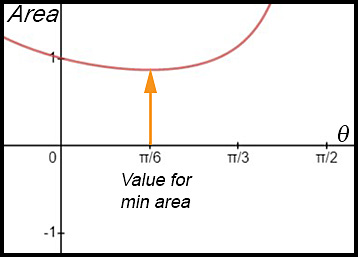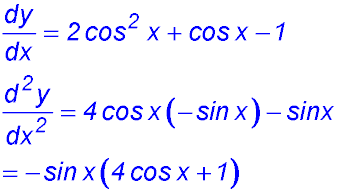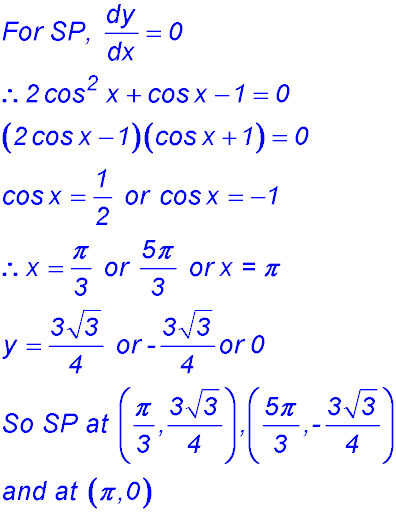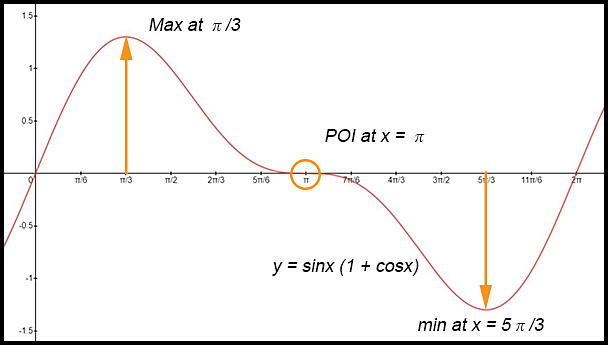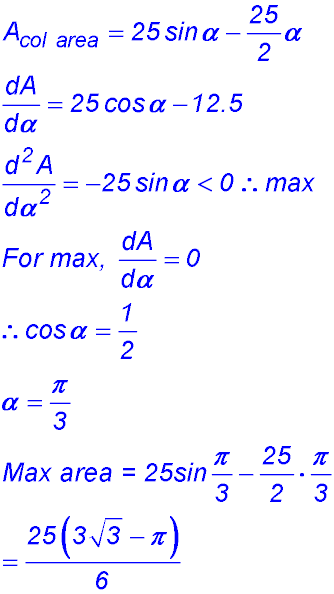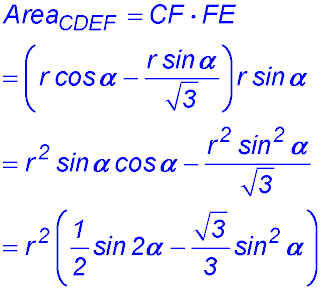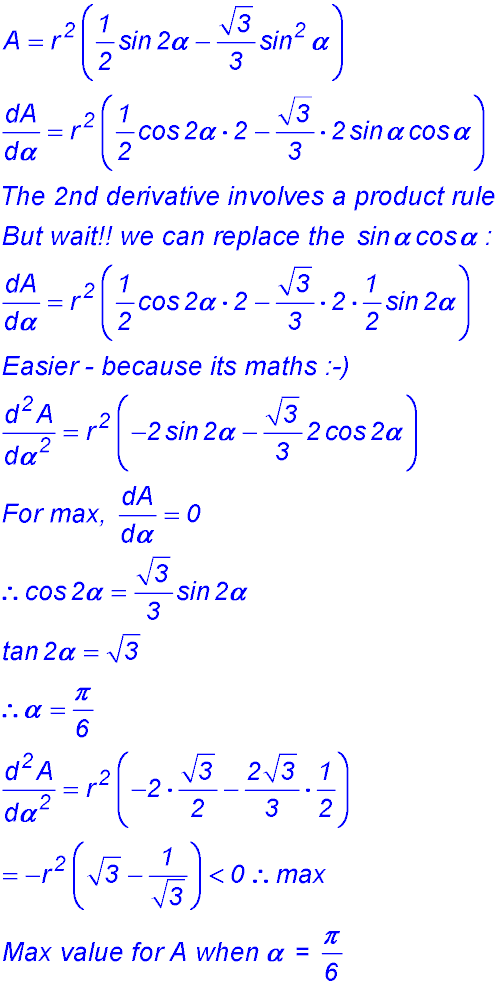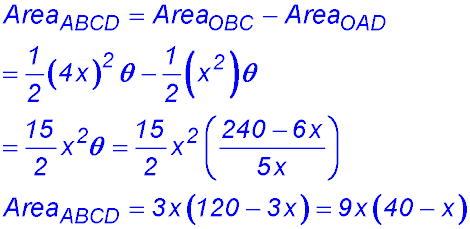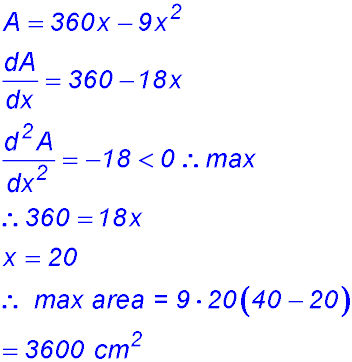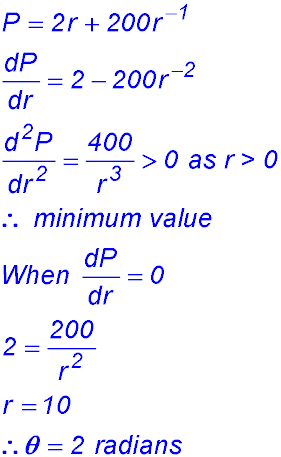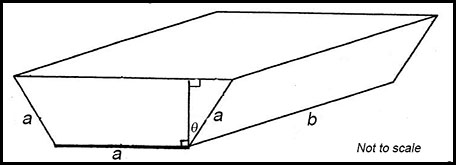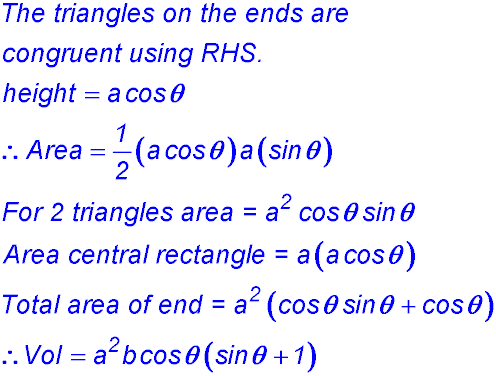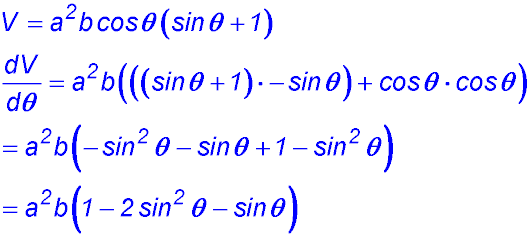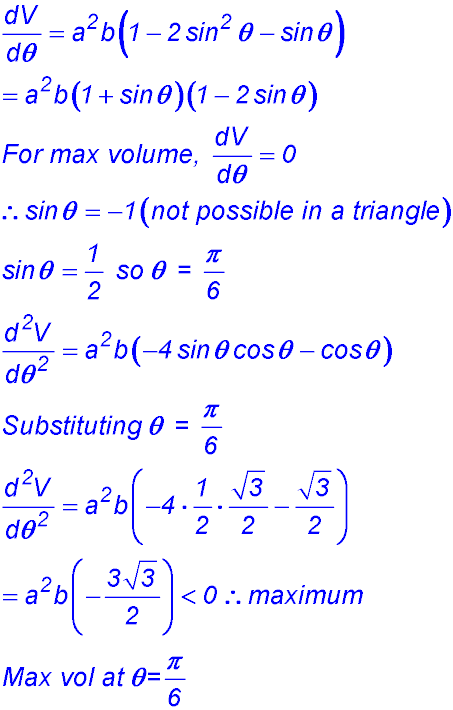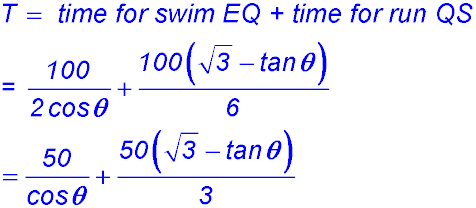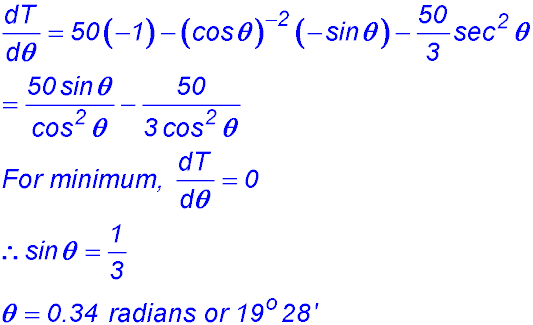Where the techniques of Maths
are explained in simple terms.
Trigonometric functions - differentiation - max/min questions.
Test Yourself 1 - Solutions.
- Algebra & Number
- Calculus
- Financial Maths
- Functions & Quadratics
- Geometry
- Measurement
- Networks & Graphs
- Probability & Statistics
- Trigonometry
- Maths & beyond
- Index
| Theoretical | 1. (i) 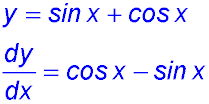
(ii) |
||||||||||||||||||||||||
| 2. | |||||||||||||||||||||||||
3. 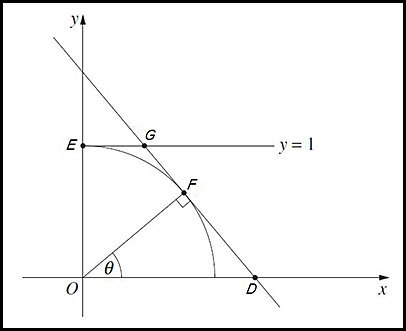
(i) (ii) Length of EG is simply the x value for G - so solve the equation from (i) with y = 1 (easiest by substitution).
(iii) For area of a trapezium (if you have forgotten) see (iv)
Change of gradient direction around π/6 from -ve to +ve - therefore a minimum area at θ = π/6. Also see the graph of this function:
|
|||||||||||||||||||||||||
4. (i) 
(ii) (iii) (iv)
Change of gradient from +ve to -ve
Change of gradient from -ve to +ve
No change in the sign of the gradient and both the 1st and 2nd derivatives equal zero at x = π (v)
|
|||||||||||||||||||||||||
| Practical situations | 5. 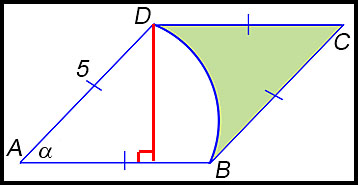
(i)
(ii) |
||||||||||||||||||||||||
6. (i) 
(ii) |
|||||||||||||||||||||||||
| Type 2: 2D shapes - sectors. |
7. 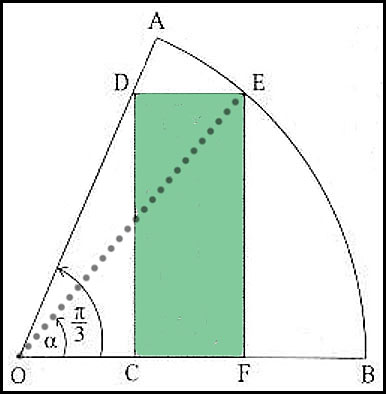
(i) Note that the structure of the expression to be proved has minus sign - that implies the proof involves a difference. In the diagram, CF = OF - OC (so there is the difference!!). In Δ OFE, with angle α,
In Δ OCD, with angle π/3, we know no side lengths.
(ii) (iii) |
||||||||||||||||||||||||
| 8. (i) To calculate the perimeter, we need arc lengths for both AD (xθ)and BC (4xθ).
Perimeter = BC + AD + AB + CD = 4xθ + xθ + 6x 240 = 5xθ + 6x
(ii) (iii) |
|||||||||||||||||||||||||
9. (i) 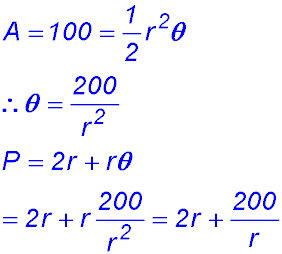
(ii) |
|||||||||||||||||||||||||
Type 3: |
10.
(i) (ii)
(iii) |
||||||||||||||||||||||||
| Type 4: Rates | 11.
(ii)
(iii)
(iv) |
||||||||||||||||||||||||
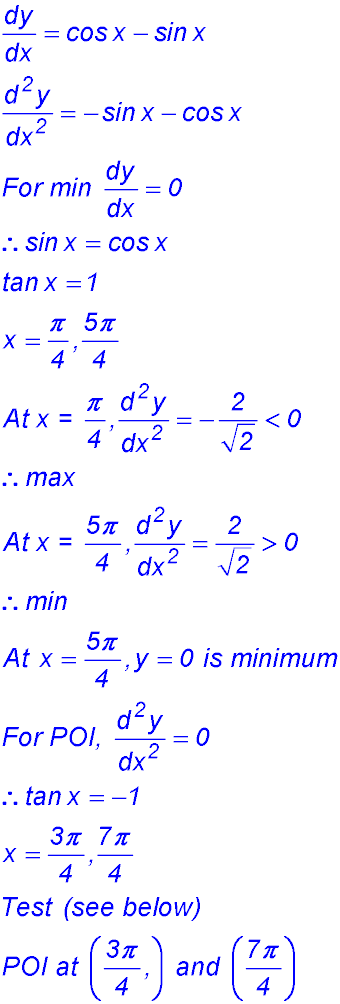
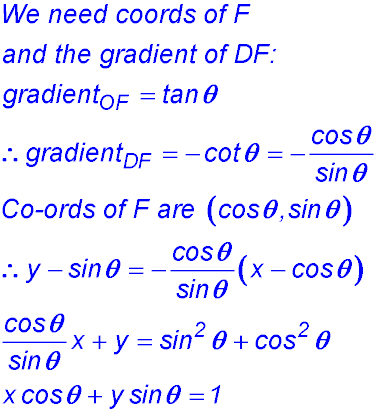
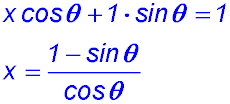
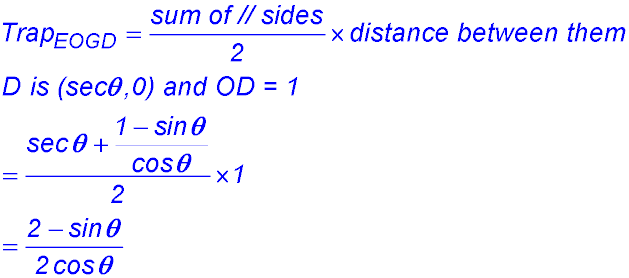
 .
.